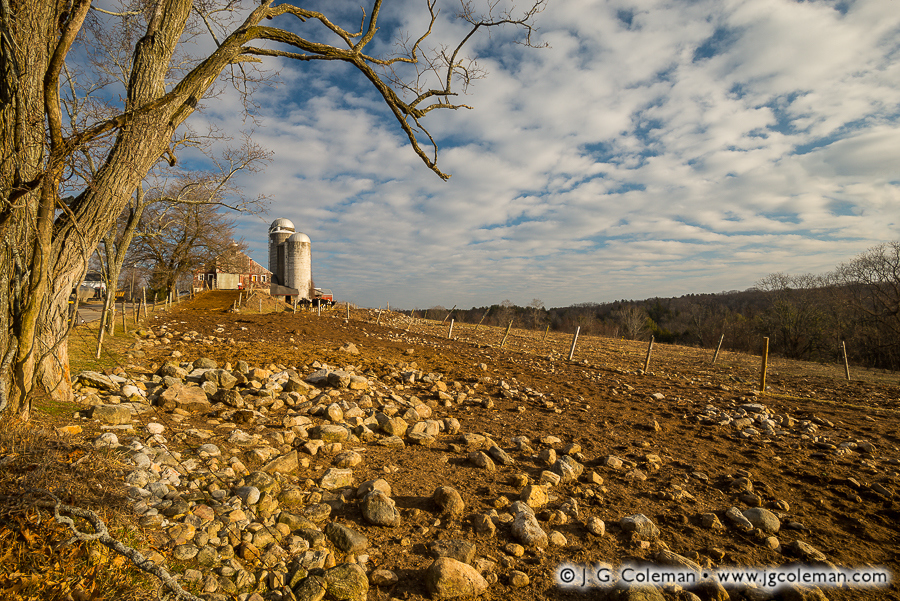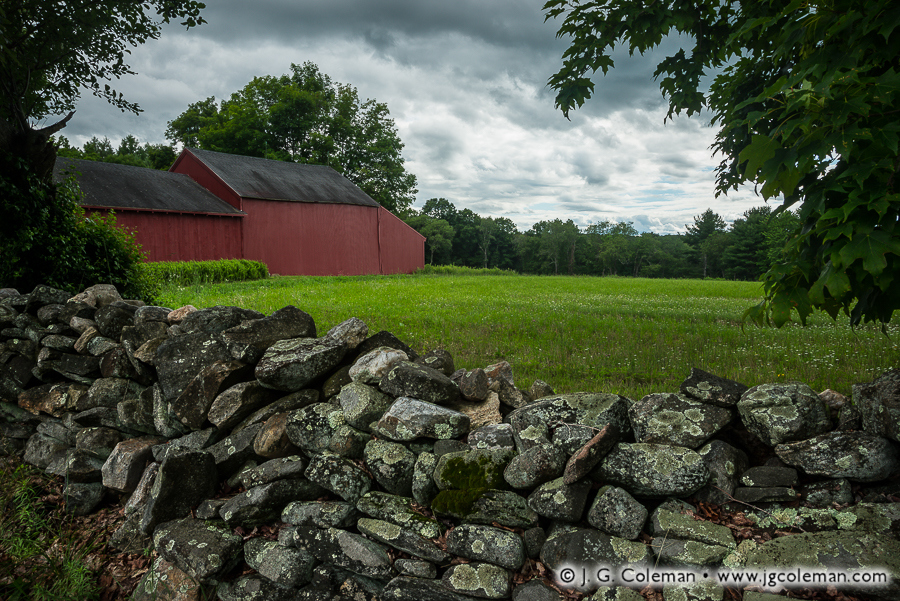
Torrington, Connecticut
© 2016 J. G. Coleman
Fences weave through a rock-strewn pasture in the northwest of Connecticut, converging at the crest of the nearby hill crowned with barns and silos. Clouds marble the blue sky overhead, fanning out over the dairy farm and the distant, wooded hills.
“Stones… Connecticut’s state flower!” As a child, I always had a laugh whenever my father related that classic New England joke. Of course, as I grew older and began trying to dig or drive rebar on my own property, the state’s characteristic rocky soil ceased to be a laughing matter. That was especially the case for many Connecticut farmers in earlier times: they toiled endlessly with the burdensome task of hauling stone out of their fields.
For that very reason, agricultural pursuits in particularly rugged areas of the state always tended towards livestock. Since the pastureland used for raising dairy cattle or sheep didn’t have to be plowed, it didn’t demand nearly as much meticulous stone removal.
Purchase a Fine Art Print or Inquire About Licensing
Click here to visit my landing page for “Yankee Farmlands № 51” to buy a beautiful fine art print or inquire about licensing this image.
Want to See More?
Be sure to check out all of the work in my on-going Yankee Farmlands project, a journey through Connecticut’s countryside in celebration of Southern New England’s agricultural heritage.



